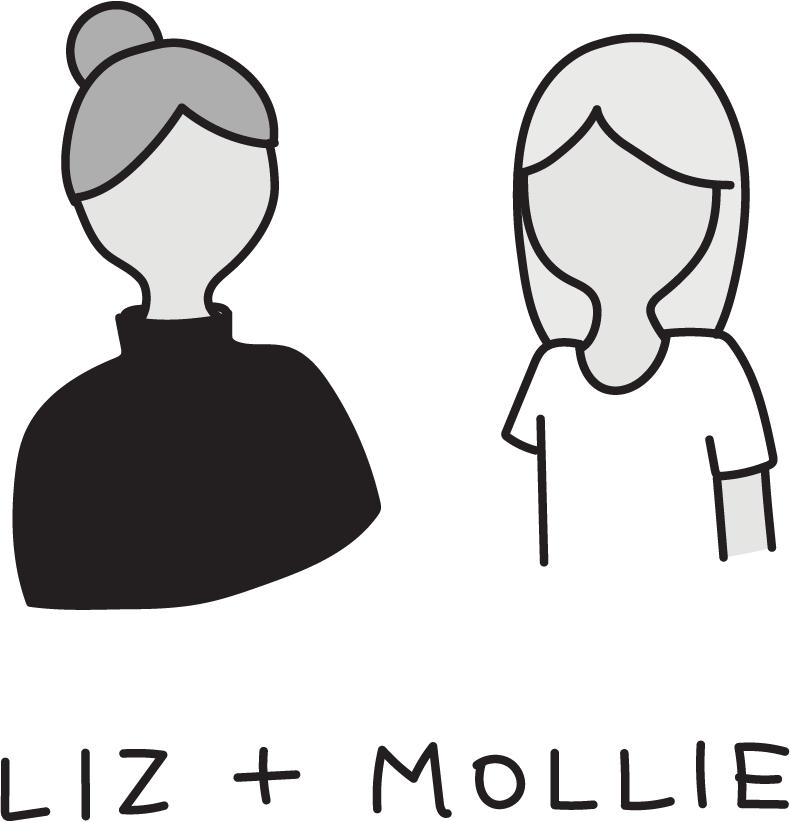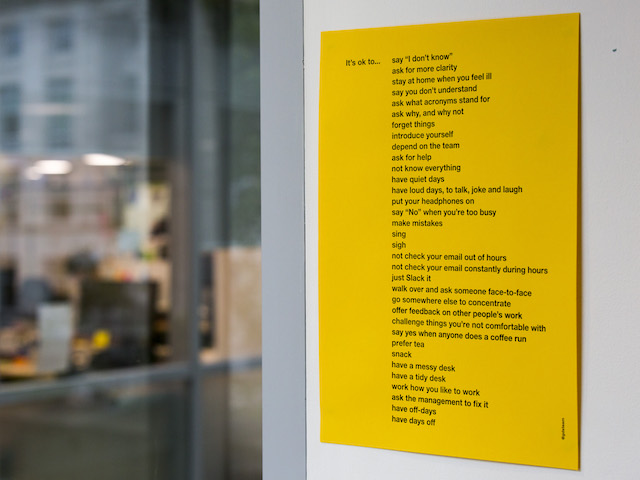When we first saw this “It’s ok to” list floating around the internet, we were immediately fans. What a great way to tangibly codify an organization’s emotional culture! For our forthcoming book, we interviewed Giles Turnbull, the writer at the UK Government Digital Service (GDS) who wrote the list. Giles created the list to help new hires “absorb five years of culture quickly and easily, without having to find things out by accident.” Giles has since moved on from the GDS, but we interviewed him about his experience of creating the list.
Q: Can you explain how you came up with the idea? What was the need within the organization?
A: It was more a need within my team. We were hiring new people, and the idea just popped into my head one day: wouldn’t it be good if those new people were able to absorb five years of culture quickly and easily, without having to find things out by accident?
Q: Who wrote the list? Was it based on phrases that were already commonly agreed upon within the organization?
A: I wrote the first draft and shared it with colleagues. A few of the lines were amended or added by them. None of the lines were based on anything that already existed; they were just the lines that felt right.
Q: What was the reaction internally when you put it up?
A: People loved it. They started tweeting about it almost immediately. Some people came and spoke to me about it. Management were very receptive.
Q: Where, physically, does it hang within the organization (e.g. on walls, on desks)?
A: Last time I was there it was still where Zara and I left it - up on the walls in various places. Interestingly, people did take photos of those posters and used those photos in presentations sometimes - so it started to have a life there, as well as on the walls.
Q: Was there any resistance to putting up the list or to including any of the listed items?
A: No. After we’d prepared the second draft, a designer called Sonia Turcotte turned it into a poster. Then another colleague, Zara Farrar, and I walked around the building and stuck up three or four copies at places where we thought they’d be noticed. This all happened late on one day, so most people had gone home. It got noticed the next morning when people returned to work.
Q: Which "it's okay..." do you personally find hardest to remember/follow?
A: The one I think is hardest is “challenge things you’re uncomfortable with,” because that can lead to confrontation and nobody likes confrontation. But it was important to include it on the list, because we wanted newcomers to know that they shouldn’t shy away from it.
Q: Which "it's okay..." does it seems like most people find hardest to remember/follow?
A: That’s hard for me to say. I think a lot of people struggle with the not checking email thing. And lots of people have views (in both ways) about messy desks/tidy desks
Q: You mention "This poster isn't exhaustive. It doesn’t say everything that needs to be said." What didn't make it on the list and why?
A: I’m still finding out. I said that in the blog post because I knew that one day, someone (not necessarily me) would think of better ways of saying that stuff. I didn’t want it to be set in stone forever.
Q: Do you know of any other workplaces that put up the list or amended it and then used it? Any particularly surprising examples (e.g. a Goldman Sachs type place)?
A: Yes, loads. I have heard that it has appeared on the walls at Spotify, Renault, Songkick, Salesforce, The Co-operative Group, and, um, Goldman Sachs. Also in many government/public sector offices in the UK, USA, Australia and France. I say I’ve *heard* of those, but I can’t be *100% certain* that it is on the walls of any of them. The reaction on LinkedIn was very positive, so I suspect it might have gone even further.
Q: How has it changed internal culture?
A: The aim was to *reflect* internal culture. It didn’t say anything that didn’t exist already. But for newcomers, it was hard to know these things, or hard to learn them quickly. Instead, they were things that people grasped over a period of time. I just wanted to speed that time up. I think we succeeded in that respect - various newcomers told me that they had found the posters useful. Several people said they’d applied for jobs at GDS as a direct result of seeing the blog post about the posters, or of seeing images of them on social media. That, to me, was a sign that the posters were a good thing - they reflected existing culture back at the team, but also outwards. One photo of one poster became a powerful recruitment asset.
Thanks, Giles! Find Giles at gilest.org and on Twitter @gilest
Readers, we’d love to know: what would be on your organization’s “It’s ok to” list?


